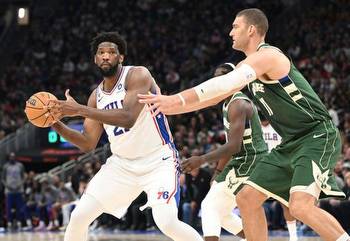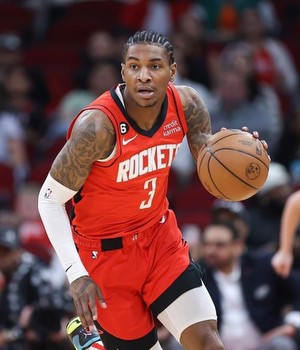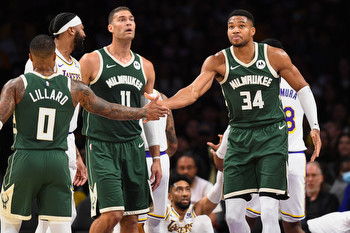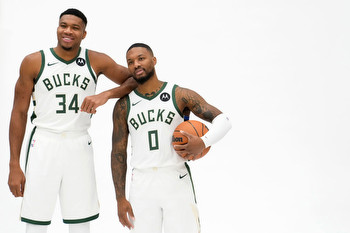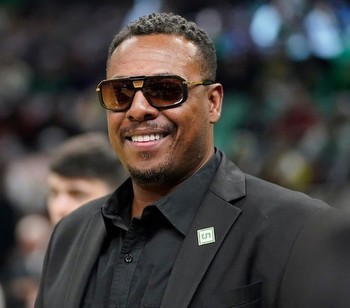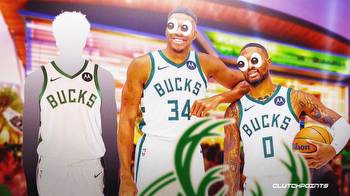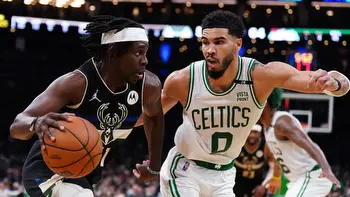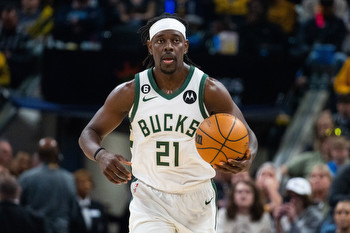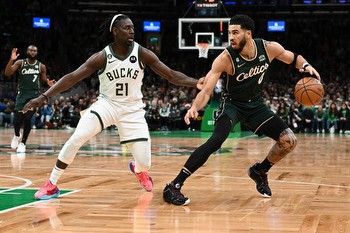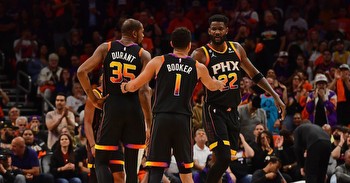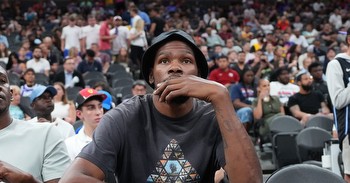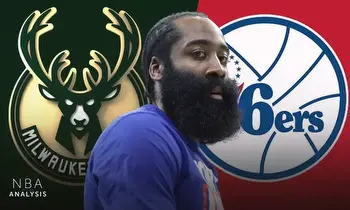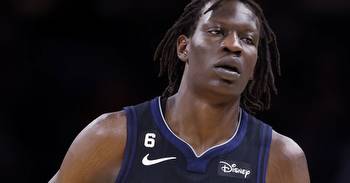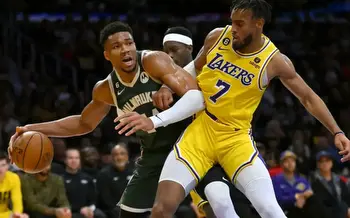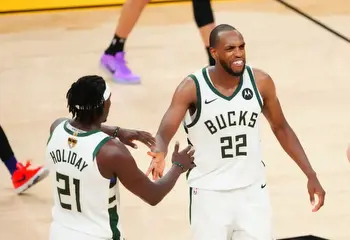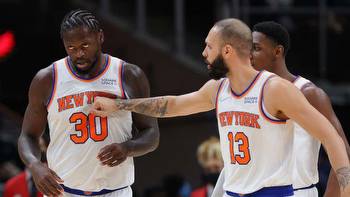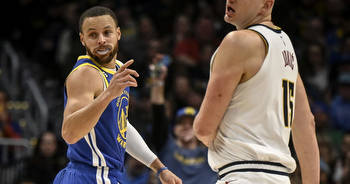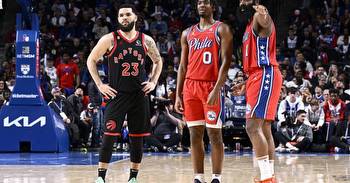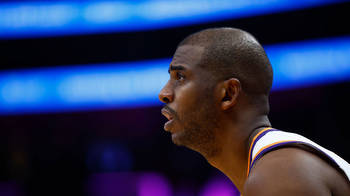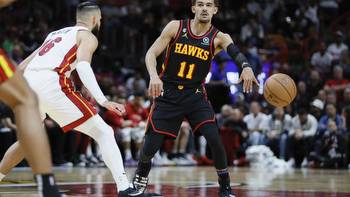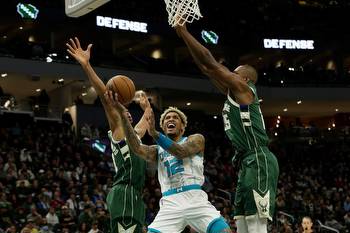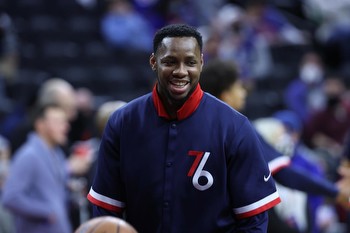Backup Point Guard: A Campaign Strategy for the Bucks
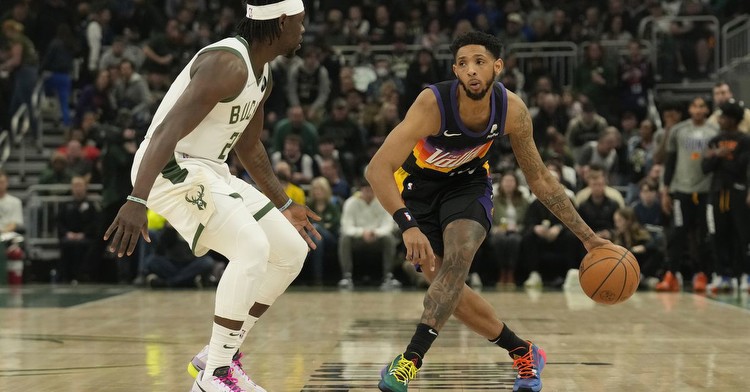
Since it became clear that Milwaukee was losing Jevon Carter and Joe Ingles in free agency over two months ago, there’s been a not insignificant amount of handwringing about the team’s ballhandling depth behind Jrue Holiday. It’s fair to be a touch concerned about this, given the team’s playmaking difficulties the past two seasons, especially in the postseason, though perhaps a full year of Khris Middleton and a new coach ameliorates that somewhat. Recall that the Bucks won a title with only Jeff Teague behind Holiday on the point guard depth chart, and he played somewhat scarce minutes.
However, I think a broad consensus of Bucks fans would prefer the team add another point guard, even a less-heralded one as opposed to a bigger name who could take some of Holiday’s responsibilities in the playoffs, where he’s been pretty erratic on offense. Some fans, particularly those who keep a watchful eye on league transactions, had their interest piqued last Monday by this Woj grenade yesterday afternoon:
The Bucks are familiar with Payne from recent seasons, most notably as Chris Paul’s understudy in the 2021 NBA Finals. While not to the degree of the more notorious Bucks killers, he’s put together a few pretty nice games against Milwaukee since reestablishing his NBA career in Phoenix beginning in 2020. Never mistaken for a plus defender, he still checks off a lot of boxes beyond simply his position. His per-36 numbers of 7.7 assists vs. 2.6 turnovers over the past three seasons paint the picture of a reliable hand in the backcourt. That 2.64 assist-to-turnover ratio puts in him the range of other solid backups like Malcolm Brogdon and Carter, plus starters like Holiday and Kyrie Irving. His assist percentage settled between 30% and 32% in recent years, an above-average number even for point guards. His 30.1% last year would have put him third on the Bucks, behind Giannis and Holiday.
Though his efficiency took a big hit in the last two seasons, he’s still a solid three-point shooter who can sometimes create his own looks from deep: 41% of his threes were unassisted, also above average among ballhandling guards. He finished at a decent clip around the rim prior to the past couple of years and shot well in the 5–20 foot range since landing in Monty Williams’ midrange-happy system, but a good 40% of his shots come from downtown.
All this is to say that Payne would make for a nice fit in Adrian Griffin’s rotation, able to take on enough ballhandling duties to spell Holiday and Middleton, likely in the playoffs too based on the Suns’ last few runs. I don’t think you can do better than Payne at this point in the offseason. However, as anyone following the offseason closely is aware, the Bucks not only have a full roster of fifteen guaranteed salaries but are also over the NBA’s second apron, meaning they couldn’t really sign outside free agents to anything more than the minimum.
Technically, the Bucks could sign Payne to a standard contract because during the offseason, teams may roster up to 21 players. Currently, the Bucks are at that number—which includes their three two-way players and three camp signees—but if they were to waive the recently-signed Marques Bolden and his training camp (likely Exhibit 10) deal, they’d retain his G League rights while opening up a spot. That doesn’t solve the problem that would present itself leading into Opening Night, though. In order to get him on the standard roster, someone would have to go.
If GM Jon Horst decides to waive someone, he’d be hoping they are claimed on waivers (related: Payne cleared waivers last week), or the Bucks are on the hook for their 2023–24 salary. That may not sound like a big deal, but as a team likely over the NBA’s second apron above the luxury tax line, they’re already hamstrung by restrictions on signing free agents that status brings, plus an estimated $49.7m tax payment. Though the fifteen guaranteed salaries that count for cap purposes total $181.7m, just under the $182.8m second apron, unlikely benefits in Khris Middleton’s, Jrue Holiday’s, and Grayson Allen’s contracts mean that their tax number is $187.4m. That represents the most they could pay their current roster if all the incentives hit.
While the Bucks would probably pay a bit less than that figure, it prevents them from using their $5m taxpayer version of the mid-level exception to sign free agents. All they can do to bring in players from outside the organization is offer them minimum contracts, which they did with Malik Beasley and Robin Lopez. Perhaps Payne would be willing to take the minimum since San Antonio will be footing the $6.5m salary he’s owed on the final year of a three-year, $19m contract signed back in the 2021 offseason. As Woj mentions, he wants to play for a contender, and many of those teams are also limited to offering minimums just like the Bucks: the Clippers, Warriors, Heat, and Celtics can’t offer Payne more than the minimum at present. The Suns couldn’t either, but after trading him this summer, can’t re-sign him per league rules.
Payne could, however, get more money than the minimum from a team that has a cap exception or two available. The amount of an offer using an exception varies from team to team depending on their team salary in relation to the cap or tax line, but it ranges from the $4.5m bi-annual exception to the $12.4m full non-taxpayer midlevel exception. Many teams have used a portion or all of their exceptions and could use the remainder to sign a free agent like Payne, but doing so might put some of those franchises (like the Cavs, Knicks, Lakers, and Wolves) over the tax line. Others (Atlanta, Brooklyn, Charlotte, Memphis, Portland, and Washington) haven’t used their exceptions at all, and fewer (Detroit and Utah) have cap space available with which they could sign Payne. Not all of those teams are contenders, of course.
Most teams have filled up their 21-man offseason rosters by this point too, but some of them—the Heat, Lakers, Knicks, Rockets, and Thunder—have some players on contracts that aren’t fully guaranteed, so they could make room for Payne on whatever contract he signs and not owe too much, if anything. Others—Boston, Chicago, Dallas, Golden State, Minnesota, Orlando, Sacramento, and Utah— have fewer than 21 guys on the roster and could plug him into their fifteen-man group straight away, maybe without even having to waive anyone. Again, though, not all of these are playoff teams.
The Bucks are operating at a comparative disadvantage to just about every other contender when it comes to signing Payne because of their lack of a roster spot and/or their inability to offer more than the minimum. Let’s look at how the Bucks could address both of those dilemmas, starting with opening up a roster spot.
Among the fifteen Bucks currently on fully-guaranteed contracts, any of them could theoretically be waived, but the higher the contract, the more unlikely it’s claimed. Maybe a team would take a flyer on a waived young guy like either A.J. or Chris Livingston, but it’s more likely their minimum deal would just be dead money on the Bucks’ ledgers for next season. It’s not a great look to summarily cut any of those players who just signed contracts or were drafted within the last few months, but in order to bring in a good piece like Payne, maybe it’s worth it.
In waiving anyone, though, Milwaukee isn’t getting anything in return. So how about trading someone and receiving fewer or no players in return? The pickings get slimmer. Since they were signed this offseason, Thanasis, Beasley, Jae Crowder, Green, Robin Lopez, and Khris Middleton cannot be traded until December 15th. In fact, due to the nature of their contracts, Thanasis and Crowder can veto any trade this season. Brook Lopez can’t be traded until January 15th. You can bet Payne will be signed long before any of these dates.
That leaves seven players who are currently trade-eligible. Let’s obviously dismiss Giannis and Jrue Holiday—the only proven point guard on the roster—from those candidates. A two-for-one, or three-for-two deal involving any of Bobby Portis, Pat Connaughton, Grayson Allen, MarJon Beauchamp, Andre Jackson Jr., or Chris Livingston is plausible, but what kind of return makes it worth the Bucks’ while? Either you’re subtracting a key role player or a prospect; any prospect coming back would probably be a lottery ticket like Livingston and if they can somehow get a role player after sending two players out, I’m not sure you can upgrade on any of the veteran trio without including some draft assets. At this point in the offseason, no team can absorb any contract above the minimum without sending some salary back in return, so you can forget about trading Allen for picks.
There are two benefits to trading out more players than you bring in, though. For one, if Milwaukee sends out enough salary, they might dip far enough below the second apron that they could use some of their MLE, and that might be enough to get Payne. For two, taking back less salary than what’s sent out creates a trade exception in the amount of the salary differential. That could be useful at some point before it expires one year after the trade, but how big it is would depend. Trading, say, Allen’s and Connaughton’s combined $18.3m salary to a team below the tax line could create an exception of up to $9.2m. Trading either or both of the rookies on minimum contracts would create an exception that’s not much different than the minimum, which isn’t a useful trade exception.
Right now, Milwaukee’s best bet is to hope he’ll take the minimum and go further over the second apron. If that happens, they either have to waive or trade someone from the fifteen-man roster before the season begins. In the latter case, I don’t think what would essentially be a salary dump is worth it just for the ability to sign Cam Payne. If that trade meaningfully shapes the roster, like if they swapped out a role player or two for a new one, that’s one thing. If it’s trading Livingston for a printer or the rights to a retired European player who never appeared in the NBA, might as well just waive him anyway.

